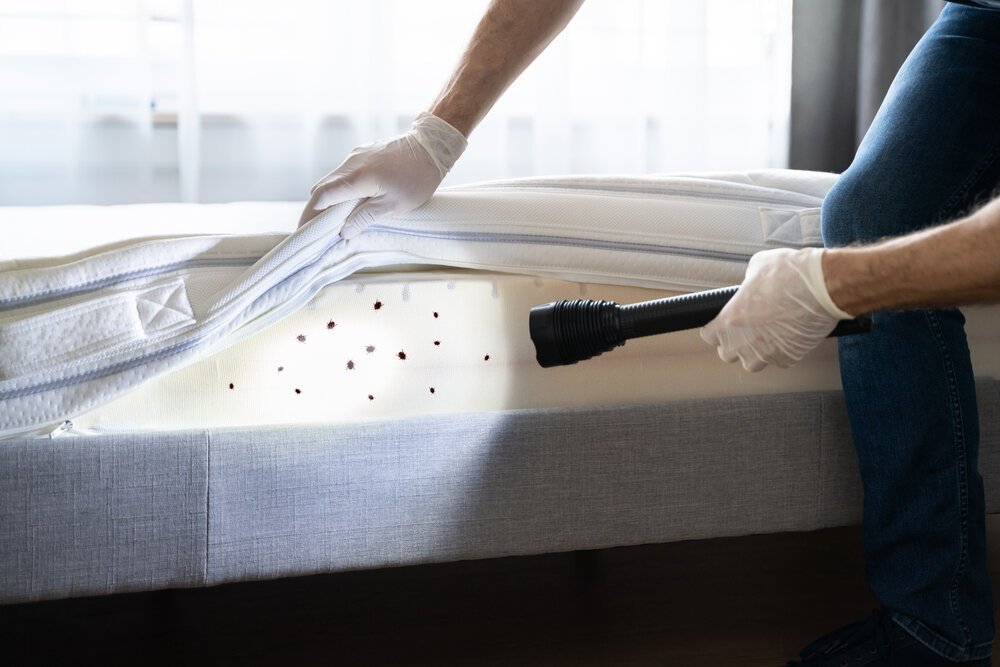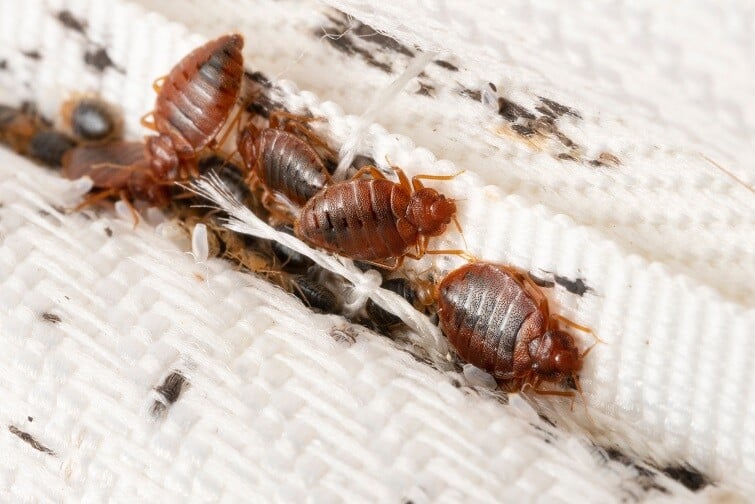Experienced DC Exterminator for Bed Bug Heat Treatment Near Me
Wiki Article
How Bio-Fungicide Sprays Can Provide Safe and Eco-Friendly Bed Pest Therapy Solutions
Bio-fungicide sprays have emerged as an appealing option for dealing with bed pest problems without resorting to rough chemicals. The application of these sprays introduces a nuanced approach to pest monitoring, but exactly how do these bio-fungicides truly connect with bed bugs, and what sets them apart in terms of safety and eco-consciousness?Recognizing Bio-Fungicide Sprays
Bio-fungicide sprays are a sort of environmentally friendly treatment that makes use of beneficial fungi to deal with insects like bed bugs. These sprays contain living microorganisms that effectively target and eliminate bed insects without the use of extreme chemicals. By taking advantage of the natural antagonistic connections in between certain fungis and insects, bio-fungicides offer a sustainable and secure alternative for insect control.
Moreover, bio-fungicide sprays are understood for their marginal effect on non-target microorganisms and the setting. Unlike artificial chemicals, which can leave damaging deposits and add to chemical resistance, bio-fungicides damage down normally, posturing less risk to valuable insects, pets, and the community as a whole. In general, recognizing the mechanism and benefits of bio-fungicide sprays is important for advertising their use in lasting pest administration techniques.
Benefits of Eco-Friendly Therapy
Using eco-friendly therapies in parasite control supplies various benefits for both human health and wellness and the environment. Green treatments, such as bio-fungicide sprays, are formulated making use of all-natural ingredients that are less hazardous to humans, family pets, and useful organisms in the atmosphere. Unlike standard chemical pesticides, green therapies present marginal risk of poisoning and deposit accumulation, making them much safer for interior use, particularly precede where pets and children constant. Additionally, these treatments have reduced environmental influence, as they damage down faster and do not add to long-lasting contamination of dirt and water sources.Furthermore, environmentally friendly treatments advertise lasting parasite monitoring methods by targeting certain pests like bed bugs while protecting helpful pests that add to ecosystem equilibrium. This targeted approach minimizes the need for broad-spectrum chemicals that can harm non-target species and interrupt all-natural communities. By sustaining biodiversity and reducing direct exposure to dangerous chemicals, eco-friendly treatments provide an alternative pest control solution that focuses on the well-being of both humans and the environment.
Performance Against Bed Pests
How do eco-friendly treatments contrast to conventional chemical pesticides in efficiently controlling and targeting bed pest infestations? When it concerns the effectiveness against bed pests, bio-fungicide sprays have actually shown encouraging outcomes. These eco-friendly options, stemmed from all-natural sources like fungis and bacteria, have been located to be effective in getting rid of bed insects at numerous stages of their life cycle.Bio-fungicides work by disrupting the bed bugs' biological processes, leading to their eventual demise. Unlike conventional chemicals, bio-fungicides have a lower threat of creating resistance in bed bug populaces because of their unique setting of activity. In addition, bio-fungicides have a reduced influence on non-target organisms and the atmosphere, making them a more secure option for bed bug therapy.
Research studies have demonstrated that bio-fungicide sprays can properly lower bed pest populaces in plagued areas, supplying a viable option to chemical pesticides. Their ability to target bed bugs while being risk-free for humans and pets makes them an important tool in integrated bug monitoring strategies. Generally, bio-fungicide sprays offer a promising remedy for effectively combating bed bug infestations in a safe and green manner.
Security for Pets and human beings
In thinking about the implications of using bio-fungicide sprays for bed insect treatment, a crucial aspect to assess is the safety of these options for both published here humans and pet dogs entailed in the treated environment. Bio-fungicides are stemmed from naturally occurring microorganisms and are often taken into consideration safer than typical chemical pesticides. Bio-fungicide sprays position minimal threats to animals and people when effectively used complying with supplier directions. These items have low poisoning levels, decreasing the potential for unfavorable wellness effects. Unlike rough chemical pesticides, bio-fungicides are much less most likely to cause breathing problems or skin inflammation in humans and pet dogs. Furthermore, bio-fungicides break down much more promptly in the environment, reducing the risk of long-lasting direct exposure. As with any kind of insect control item, it is vital to take precautions during application, such as using safety gear and maintaining pet dogs away from dealt with locations till the spray has actually dried. Generally, bio-fungicide sprays offer a green and risk-free alternative for bed bug therapy, prioritizing the well-being of both people and pets in the treated room.Eco-Conscious Bed Insect Solutions
When dealing with bed insects, it is necessary to take into consideration the impact of treatment approaches on the atmosphere. Eco-conscious bed bug services, such as bio-fungicide sprays, provide a more secure choice that targets bed bugs while being less damaging to non-target organisms.Bio-fungicides are originated from naturally happening fungi and over here have been revealed to properly regulate bed pest populations without posing substantial dangers to the environment. These items function by interrupting the bed pests' life process and are naturally degradable, lowering the threat of hazardous residues in the atmosphere. By selecting eco-conscious bed insect solutions, people can resolve problems properly while reducing their environmental footprint.
Furthermore, advertising making use of sustainable and eco-friendly bed pest treatment choices can help elevate recognition regarding the relevance of protecting the atmosphere while safeguarding human wellness. By incorporating eco-conscious methods right into pest management methods, people can add to a healthier and even more sustainable future for both people and the earth.
Conclusion
In conclusion, bio-fungicide sprays supply risk-free and environmentally friendly remedies for bed insect therapy. Bio-fungicide sprays offer a sustainable alternative to typical chemical therapies, making them a promising choice for controlling bed bug problems.Bio-fungicide sprays are a kind of environmentally friendly therapy that makes use of valuable fungis to deal with pests like bed insects - exterminator near me.In considering the effects of using bio-fungicide sprays for bed insect therapy, an important facet to analyze is the safety and security of these alternatives for both humans and pets included in the treated setting. On the whole, bio-fungicide sprays supply a green and risk-free option for bed pest treatment, prioritizing the well-being of both people and family pets in the treated space

In final thought, bio-fungicide sprays provide secure and environmentally friendly options for bed bug therapy.
Report this wiki page